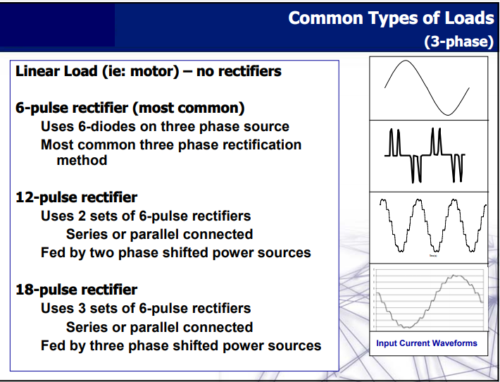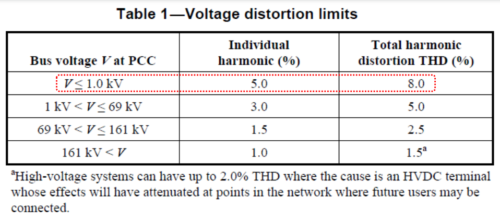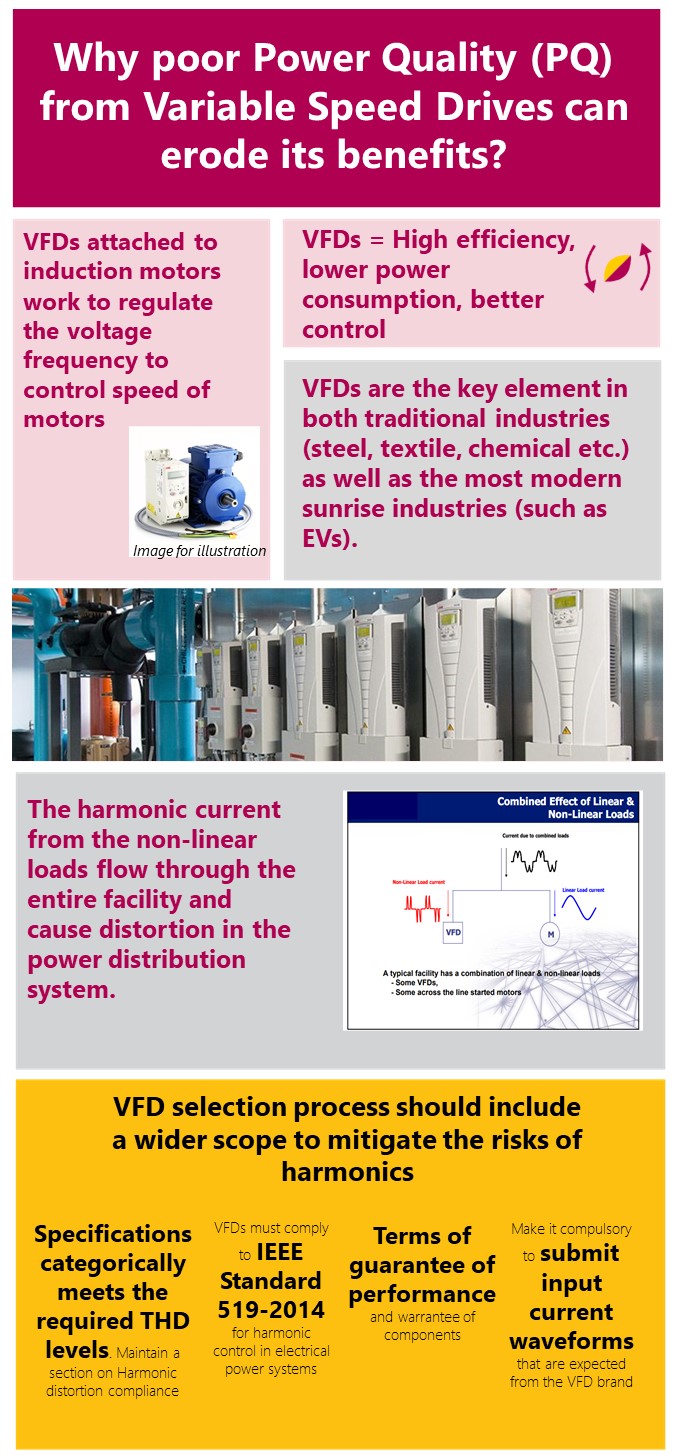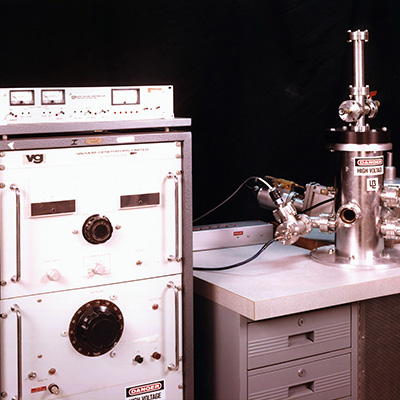Published On: Aug 05, 2020
In the automated environment of the modern facilities and equipment, VFDs (also known as Variable Speed Drives VSDs or ASDs – Adjustable Speed Drives are omnipresent. There is hardly any modern-day application which does not rely on the highly power and space efficient VFDs. While the weight of advantages and applications of VFDs continues to grow, so does the weight of risks that they bring in the form of poor PQ. For the facilities to function reliably, a counter-weight that reduces the risks from poor PQ must be always considered.
While VFDs add efficiency, they also create Power Quality issues. If left unbalanced, the benefits created by the added efficiency can be eroded significantly.
INTRODUCTION
Variable Frequency Drives (VFDs) attached to induction motors work to regulate the voltage frequency to control speed of motors. VFDs are used in a variety of devices starting from the simple household or industrial water pumps, fans, compressors to sophisticated windmills. VFDs are used extensively across industries such as steel, textile, chemical processing, and renewable energy, and manufacturing among others. As the use of automation increases in every industry, VFDs are being used increasingly in this scenario because of their capability to lower power requirement for variable output, and their ability to drive automation by being compatible to many other devices.
VFDs have high efficiency of up to 95-96%. They offer better control over speed and run at lower frequency, when needed, below the fundamental so motor has a lesser energy consumption and better life. While it may almost look like there is no end to benefits of VFDs, that is not entirely true. Like all good things, VFDs too come with a rider. As VFDs drive the automation on one side, they also tend to be a source of major Power Quality issues that can damage sensitive electronic equipment and affect the functioning of the entire electrical network through various issues. Let’s delve deeper.
VFD BASICSVFDs rectify an incoming AC current, by manipulating the frequency of their output and convert it into DC. The VFDs then use voltage pulse-width modulation to recreate the voltage waveform output of an AC current with desirable frequency. In the voltage sign wave, current flows in one direction when positive; and as the voltage is negative, there is an opposite flow of current direction. VFD uses a rectifier to convert incoming ac power into direct current (dc) power. The rectifier allows the power to pass through only for positive voltage curve. Another rectifier would allow the power to pass through when the voltage curve is negative. So, two rectifiers are required for each phase of power. Likewise, VFD may include multiple rectifier sections for three-phase power. But the frequency conversion process leads to 2% to 3% loss due to heat generated in the VFDs. More dangerously, the conversion process as a side effect leads to overvoltage spikes and harmonic current distortions – a key concern for the Power Quality of the electrical network. |
Why VFDs are so popular?
- 95-96 % efficient
- Motor has a longer life when VFDs are used
- Better speed control
- Require lesser space as compared to the mechanical systems
- Reduce maintenance cost by eliminating mechanical components such as gear boxes and belts
- Optimized motor starting
- Reduces power requirement
- Reduce thermal and mechanical stresses on motors and belts
- Simple to install
- High power factor,
- Lower kVA, helping alleviate voltage sags and power outages
Where do you find VFDs in use?
Rather, what would qualify as an equally accurate question today to ask here would be where do you not find a VFD in use? A cursory look at the range of applications of VFDs is enough to demonstrate their default-presence in every automated environment or device. Take a look:
- Control duplex pumps
- Swimming Pool Filtration System
- Booster Pumps
- Compressor in oil and gas industry
- Virtual Vibration Testing in Railway System
- Centrifugal Pumps
- Variable Air Volume system like ID or FD fans in power houses
- Drive for Crane & Hoist
- Energy saving for Fans
- HVAC Chiller
- Electric Vehicles
The list above is only indicative of how VFDs are the key element in both traditional industries (steel, textile, chemical etc.) as well as the most modern sunrise industries (such as EVs).
UNDERSTANDING VFD FROM HARMONICS AND POWER QUALITYVFDs often tend to distort voltage while conversion between DC to AC, and this can result in a number of problems. A facility typically has both linear & non-linear loads which include VFDs, and some across the line started motors. The combination of these loads can create rather complex impact on the current and voltage profiles in the electrical network.
The harmonic current from the non-linear loads flow through the entire facility and cause distortion in the power distribution system. |
As per the IEE-519-2014 Standards the following current and voltage distortions are prescribed:
 |
TACKLING PQ PROBLEMS VFDS
Installing the right VFD
Many VFDs are designed to tackle the harmonics problems to some extent, and mitigating the issue can simply come down to choosing the suitable VFD option for your facility. For example, 12- or 18-pulse rectifier front-end VFD has rectifiers at its front that eliminate the lower order current harmonics. The Active switch rectifier VFD uses pulse-width modulation techniques or semiconductor switches to control the input power factor to a desired value. Again VFD with reactor offers another way to tide over issues of PQ.
Harmonics Analysis
Attention must be paid to design an electrical network in such a way that harmonics caused by VFDs are avoided. Businesses must calculate how much of the total connected load in the system is contributed by VFDs. Most industrial establishment can tolerate around 20% load before adding other equipment. In case of sensitive networks such as hospitals and airports, the tolerance level is even lower, at around 10%. If stakeholders are certain that these levels will be exceeded, conducting a formal harmonics analysis is a must. Harmonics content can be predicted with significant accuracy if the ratio between linear and non-linear loads is accurately established in the first place.
Harmonics Filters
Once, a prediction of possible harmonics is built, relatively small harmonics levels can be mitigated with use of simple passive filter that traps the lower order current harmonics. On the other hand, active filters can also be used to considerably reduce THD I in the system. A third type, Hybrid filters are combinations of active and passive filters. The Hybrid Filters are used in specific applications to leverage the benefits of both type of filters.
When it comes to mitigation of harmonics using filters – customers typically have two choices:
- Bulk Mitigation/Centralized Solution
- Local solution at the source of harmonics
Further, Harmonic filters are divided into several sub-categories to solve specific problems in the network. Some examples are given below:
- Tuned Harmonic Filters will remove specific harmonics (for instance, 5th or 7th Harmonic)
- Dynamic Tuned Harmonic Filters use LV filter and an interposing transformer to reduce harmonics in MV loads
- Low Pass Harmonic Filter can filter all harmonic frequencies and can be applied to a particular VFD or a group of VFDs
- Specifications: Include the VFD harmonic mitigation equipment specifications as part of the solution which includes VFDs and ensure it categorically meets the required THD levels. Maintain a section on Harmonic distortion compliance separately in the specification of the solution using VFDs.
- Quality: The VFDs must comply to IEEE Standard 519-2014 for harmonic control in electrical power systems
- Data/Samples: Make it compulsory to submit input current waveforms that are expected from the VFD brand. Request submission of live site samples from earlier installations. Validate the data of samples meets the requisite standards of harmonics. Try and acquire the data for local installations or nearby installations to get a even more accurate understanding of the performance of the VFDs and its harmonic mitigation technique.
- Third Party Parts/components: It is likely that while providing the VFD and harmonic mitigation equipment, the manufacturer may source a few components from Third Party agencies. In such cases, the ownership in terms of guarantee of performance and warrantee of components not manufactured by the VFD maker must be included in the package.
- Calculations: Seek the calculations including the harmonic systems analysis, flow calculations etc. must be submitted in detail at the evaluation level
- Pre-commissioning: Conduct extensive tests at different combination of loads and document harmonic distortion compliance for the same, before providing a commissioning certificate.
CONCLUSION
VFDs indeed play a vital role in driving efficiency and automation, but their tendency to cause harmonics and electromagnetic issues can cause a serious threat to a business’s automation plans. For a successful move to automation, keeping a check on PQ issues resulting from VFDs is necessary. Mitigating the risks from VFDs, especially those from harmonics, must be systematically addressed to avoid various issues, and unforeseen costs and interruptions.
VFD Manufacturers are operating in a highly competitive marketplace. The tendency to save costs and offer drive products without input reactors, unless specified by the end user is not uncommon. Users too are not entirely familiar with reasons of harmonic mitigation required in VFDs and how it benefits the reliability of the drive and overall PQ of the electrical network.
The approach should include norms when prescribing or selecting the VFDs, pressing for an integrated solution with built-in solution for harmonic mitigation and continuous monitoring and testing of harmonics and its impact on the power network. To fully gain the benefits of efficiency from the VFDs, the network must always be protected from poor PQ which poses the prime risk of erosion of the benefits gained.
REFERENCES
- Eliminating Harmonic Problems – https://ewh.ieee.org/conf/tdc/Eliminating_harmonic_problems_APQ_T_D.pdf
- Harmonic Filters – https://www.sciencedirect.com/topics/engineering/harmonic-filter
- Harmonic Mitigation in VFDs – https://www.vfds.com/blog/vfd-harmonic-mitigation/
- IEEE Standard 519-2014
- Compliances, Updates, Solutions and Case Studies – http://www.egr.unlv.edu/~eebag/IEEE_STD_519_1992vs2014.pdf










